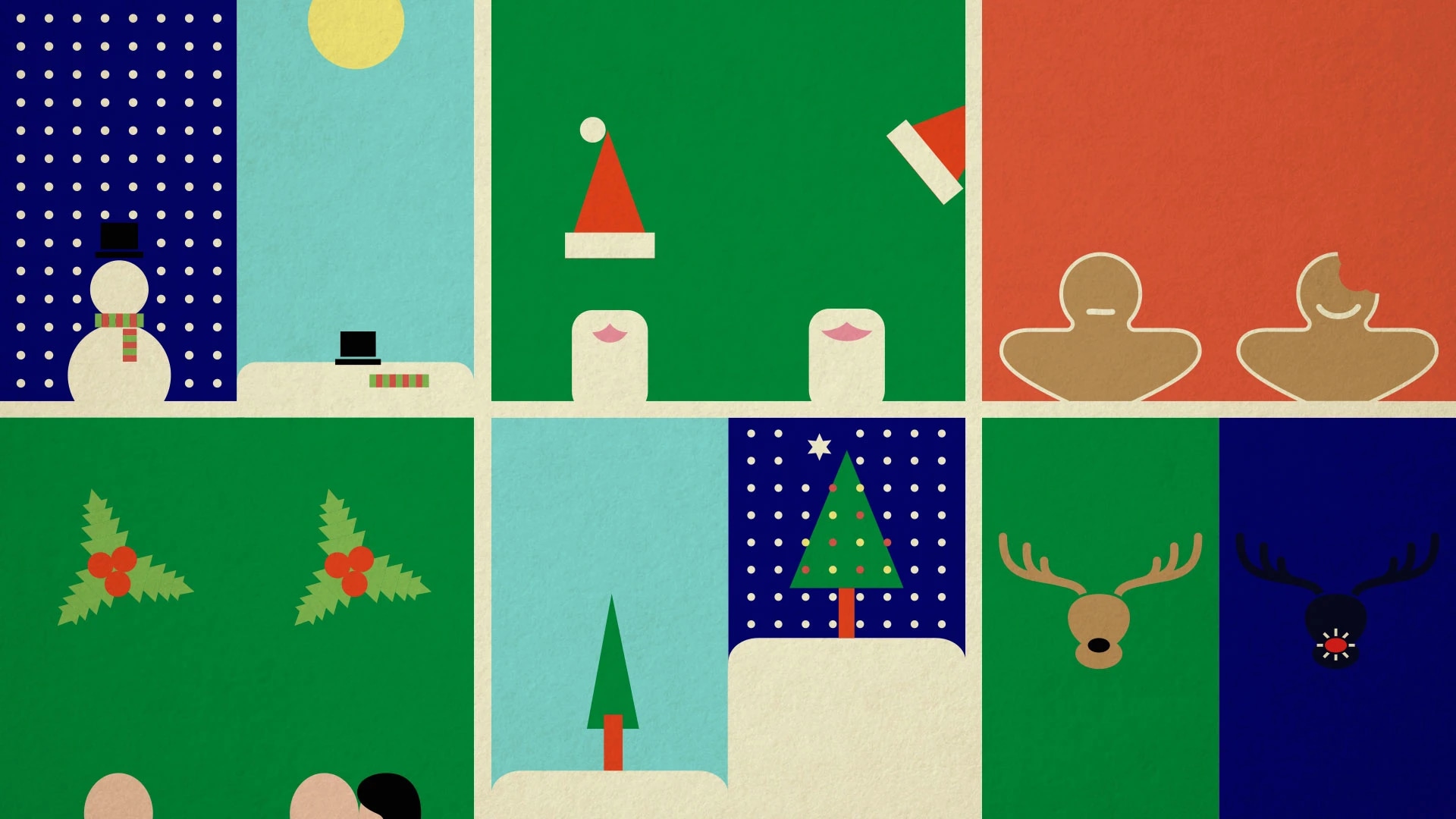A Carol For A Brand New Christmas
In a saucepan, on medium heat, bring to a boil 3 cups of milk, a cup or so of heavy cream, 3 inch-long cinnamon sticks, vanilla (bean/pods or vanilla essence) and a teaspoon of grated nutmeg. Switch off the heat. Separately, beat 5 egg yolks and sugar until thick ribbons form. Slowly whisk in the hot milk mix, until smooth. Add rum/bourbon/brandy and stir. Refrigerate overnight. Before serving, fold in the stiffly beaten egg whites. Garnish (grated nutmeg, cinnamon, or chocolate; feel free to improvise).
This is a recipe for eggnog, the ‘traditional’ holiday drink, at any rate in the English-speaking world. Downing a glass induces the kind of warm torpor so suited to reflection, which, with celebration, is part of the deep design of all festivals, especially those that mark a new year. A good place to start is the quote marks on ‘traditional’.
Festival traditions are in a permanent state of slow flux, subject to the processes of evolution, cross-breeding, mergers and a myriad of social and economic currents. So Christmas has several origins, as does Diwali, often referred to as India’s equivalent of Christmas. No single myth governs them. Diwali is a convergence of practice among different faiths, not a consensus of meaning.
This suggests that most festivals that are part of religious traditions, are also connected to older folk traditions. Thus Christmas is eventually Christian, but its traditions and origins were several before they became singular. Christmas lore is an amalgam of the traditions of several countries; even Yule (Yuletide, remember?) is a Germanic, pre-christian festival, and the long-bearded appearance of Father Christmas/Santa Claus/Sinterklaas may wind back to the Norse Odin (or later derivations thereof). And so on and on.
Festivals are co-opted into newer religions as a part of an embrace-and-extend strategy adopted by religious leaders since religions also collaborate with power. (Though differences in degree may distinguish Semitic religions from, say, the Hindu faith).
The point is that since these festivals are neither non-religious nor explicitly liturgical, they are much freer to evolve or invent themselves than religious rituals. The co-opting of festivals by larger, powerful religious movements, or by different communities may lead to a certain uniformity of performance.
In modernity, though, commerce and media are likely the most powerful forces that both stimulate re-invention and crystallise festival tradition. India is not a stranger to these newly synthesised ‘traditions’. The Santoshi Mata cult appeared spontaneously in the 1960s, spread by lore and word of mouth. But an iconography (appearance, dress, texts) are products of print capitalism (posters) and, to coin a phrase, entertainment capitalism, with the 1975 blockbuster film Jai Santoshi Ma.
In modernity, though, commerce and media are likely the most powerful forces that both stimulate re-invention and crystallise festival tradition.
And so it is with eggnog (the recipe above is Jamie Oliver’s, one of the 13.5 million pages answering to ‘eggnog recipes’ on Google). The recent, often commercial origins of many Christmas rituals is common knowledge. The figure of Santa (as a fat man) is said to be a Coca Cola creation, and the current uniform, the ‘Santa Suit’ dates to Henry Nast’s work for Harper’s magazine. A newspaper illustration of Queen Victoria with a Christmas tree is said to have ignited the popularity of the craze, with artificial trees (1930) being introduced by a toothbrush manufacturer putting a spare machine to profitable use. Christmas cards date to Sir Henry Cole who had the first set printed with a common message, and so on and on to every detail.

A newspaper illustration of Queen Victoria with a Christmas tree is said to have ignited the popularity of artificial trees
Consumer media culture has created an exact, and universally agreed set of symbols with which we celebrate, and especially, consume the festival. Design, through media’s power of multiplication facilitates the creation of these symbols. They are born from other, older imagery, by repeating, and re-using them and fixing their shape in specific ways.

The first Christmas card date to Sir Henry Cole who had the first set printed with a common message.
Consumer media culture has created an exact, and universally agreed set of symbols with which we celebrate, and especially, consume the festival.
The examples above, (to which add flying reindeer sled, gifts, holly and mistletoe, all drawn from various traditions) are the work of a legion of illustrators, advertisers, songwriters and tunesmiths who have fashioned a commercialised, consistent and largely transnational festival. A red, green and white palette in certain proportions instantly spells Christmas, if it is a certain time of the year. Gradually, less and less figurative detail is needed.
The deity Ganesha similarly is an all-weather icon, made compact, portable and viral. Ganesha transcends affiliations. Even minimally religious people collect Ganesha figurines as showpieces, or they might jostle for space on the pooja rack: no theological specificity applies. A painter down on his luck can survive by churning out a few. Again, his popularity allows the elimination of detail and extravagant simplification of form. Fittingly, communist China supplies both Ganeshas and Christmas decorations. One village, says BBC, has 600 factories that account for 60% of the world’s supply of the latter.
But the graphic plane is not the sole site of simplification. Festivals themselves are radically simplified into a precise choreography of symbols and rituals, driven by commerce, not by community. This objectifies it in two senses. A symbolic code with a set of visual, physical (even edible!) objects; and in the sense of making it objective—tick these boxes (wear the Santa Cap, stuff a stocking) to satisfy the conditions of performance.

The Saturday Evening Post carrying a Santa Claus Coca-Cola advertisement
In this setting it’s hard to achieve an authentic connection with the festival without escaping into the arms of the Mass or the mandir. A Diwali tied to crackers or a Christmas marked by a sad mall Santa sweating under his cotton beard, picture the world that the communications industry—and designers, too—have helped fabricate.
It’s something to consider when we sit down to design. Our profession fits in the framework of creating value for our clients. Our output, though, becomes a part of the pool of images and artefacts, that we call culture, and therefore can and should be seen outside that frame. Every now and then, we are criticised for our part in creating an ugly world, just as those who see Gurgaon’s commercial district as monstrosities must surely pass some of the blame to architects. But with these images and artefacts, we facilitate changes in practice and traditions. Perhaps we’ll take some of the blame for creating a shinier, prettier, easier world, and in so doing, a trivialised and arguably impoverished experience of this thing called the festival.
Our output, though, becomes a part of the pool of images and artefacts, that we call culture, and therefore can and should be seen outside that frame.
The symbols increasingly substitute the thing, inserting the gaudy, trivial and universally-unrejected in place of the personal, fulfilling but effortful. A bit like an eggnog powder (just add water).
Season’s greetings anyway.
____________________
First published in a slightly modified form ‘A brand new Christmas’ in Business Standard, 23 December, in Deep Design, a monthly column by Itu Chaudhuri.

